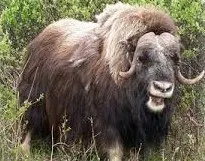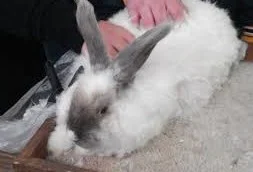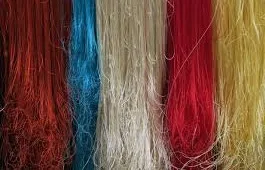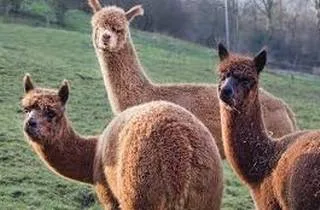What is protein fiber?
The
fiber which we get from animals or other natural protein sources is called
protein fiber. Protein fibers are of different types and they vary according to
the animal from which they are derived, their chemical structure, the way they
are obtained, and the length of the fiber.
Types of protein fiber
There
are different types of protein fiber,
such as below-
1. Alpaca fleece
Alpaca
fleece is a natural fiber produced from Alpaca that are two different types of
alpaca fleece. The most common type of wool comes from Huacaya which grows and
looks similar to sheep's wool where the animal looks fluffy. The second type
of alpaca is Suri and less than 10% of the alpaca population in South America.
Suri fiber is more similar to natural silk and keeps the body hanging on locks
that have a terrific look. Both fibers can be used in the process of growing
milling using lightweight yarn or thread, Huacaya fiber may be used in a woolen
process and can be spun into different-weight yarns. Huacaya is a very soft,
durable, gorgeous, and silky natural fiber.
2. Angora fiber
Angora
hair or angora fiber refers to the down coat collected from angora rabbits.
Although the name of the source animal is the same, the Angora fiber is
different from the Mohair that comes from the Angora goat. Angora fiber is also
different from cashmere which comes from cashmere goats. Angora refers to its
softness, thin fibers, and nitrous hollo (fluffiness) is also known for its
silky texture. It is much warmer and lighter than fur due to the hollow roots
of angora fiber. It gives them their character floating feeling. Angora rabbits
make a variety of clothing from white to tan, gray, and brown to black. The
good quality angora fiber is about 12-16 micrometers in diameter and it can
cost from 10 to 16 US dollars per ounce. It also flows over animals very
easily, if it is not made frequently.

3. Azlon fiber
Azlon
is a synthetic textile fiber made up of protein from natural sources like soy,
peanuts, milk, or corn. Currently, it is used in clothing. Azlon is defined as
any fiber that is made from regenerated protein. At present, there is no
domestic production. The common generic name for man-made protein fibers is
azlon. Arabic was a division of the National Dairy Products Corporation Aralac,
Inc. It’s a registered trademark. Its production from uninterrupted
skimmed-milk supply may have contributed to its popularity during World War II.
Azlon is a brand of plastic labware. This is a registered trademark of
Scilabware Ltd.

4. Cashmere wool fiber
Wool
in Cashmere, commonly known as Cashmere, is a fiber derived from Cashmere goats,
Pashmina goats, and some other breeds of goats. It has been used in yarn,
textiles, and clothing for hundreds of years. Kashmir shawl is closely
associated with the word Kashmir shawl when arrived in Europe from colonial
India in the nineteenth century. Normal use defines the fiber as wool and about
three times more insulating than sheep wool but it is fine, strong, light, and
soft. Both soft undercoats and guard hair can be used; Soft hair is reserved
for textiles, while thick guard hair is used for brushing and other non-garment
purposes.
 |
| Cashmere wool fiber |
5. Llama fiber
Llama
is a domesticated South American camelid that is widely used as a meat and pack
animal in Indian cultures since pre-Columbian times. Llamas are very social
animals and live like an animal with others. Their wool is very soft and
lanolin-free. Llamas can learn general work after a few repetitions. When using
a pack, they can carry about 25 to 30% of their body weight for 8 to 13
kilometers. The name Llama was adopted by European settlers from the native
Peruvians. According to the mythology of Aymara, Llamas is an important person.
The heavenly llama is said to drink seawater and urinate as soon as it rains.
According to Aymara, the esophageal llamas will return to the water and a reservoir at the end of time.
 |
| Llama fiber |
6. Qiviut fiber
Qiviut
is the muskox interior wool. In Inuktitut, the same term can be used to refer
to the lower feathers of a bird. Muskoxen have a two-layered coat, and Qiviut
refers to soft underswells, especially under long outer wool. Muskox sheds this
layer of wool every spring. Most of the commercially available qiviut come from
Canada and are found in the Muskoxen pelts after hunting. In Alaska, qiviut is
obtained from farmed animals or collected from the wild during feces.
 |
| Qiviut fiber |
7. Rabbit fiber
Rabbit
hair is generally considered a by-product of the general process of rabbit
breeding for meat, and is produced in large quantities in England and France as
well; France alone has seventy million pelts a year. However, the quality of
the animal from these rabbits is lower because the rabbits are slaughtered
before they reach the age of twelve weeks and still have their baby coats.
Low-quality hair is sometimes used for feeling. It is most commonly used in
making fur hats and coats and is considered quite valuable today, although it
was once a low-cost product in the fur business.
 |
| Rabbit fiber |
8. Silk fiber
Silk
is a natural protein fiber, some of its forms can be woven into textiles.
Silk protein fibers are composed mainly of fibroin and some insect larvae form
cocoons. The most well-known silk gun mulberry silkworm is obtained from the
larvae of Bombyx Mori. The shiny appearance of silk is due to the triangular
prism structure of silk fiber that allows the silk fabric to reflect light
coming from different angles, thus producing different colors. Silk is produced
by several insects, usually, moth caterpillar silk is used to make textiles.
There have been some studies on other types of silk, which differ at the
molecular level. Silk is mainly produced by the larvae of fully transformed
insects, but some insects like web spinners and raspy crickets produce lifelong
silk. Silk production also occurs in Hymenoptera, Silverfish, Mayflies, Trips,
Leafhoppers, Beetles, Lacings, Fleas, Flies, and Midges. Other types of
arthropods produce silk, especially various arachnids like spiders.
 |
| Silk fiber |
9. Vicuña fiber
Vicuña
is one of two wild South American camelids that live in the high alpine region
of the Andes, and the other is guanaco. Vicuña is a relative of the Llama and
is now believed to be the wild ancestor of the domesticated alpacas raised for
their dress. Vicuña produces very small amounts of fine wool that is extremely
expensive because the animal is shorn every three years and has to be caught in
the wild. When kitted together, the Vicuña wool product is very soft and warm.
The Inca considered vacuums to be extremely valuable for their wool, and it was
illegal for anyone to wear Vicuna clothing without royalty. Today, Vicuna is
the national animal of Peru and appears on the arm of the Peruvian coat.
 |
| Vicuna fiber |
10. Wool fiber
Wool
is a textile fiber that is derived from sheep and goats and other animals,
including Kashmir and Mohair. It contains protein and a small percentage of
lipids. It is produced by follicles which are small cells located in the skin.
These follicles are located in the upper layer of the skin called the
epidermis, and as the wool fibers grow, they descend to the second skin
layer called the dermis. Follicles can be classified as primary or secondary
follicles. Primary follicles make up three types of fibers: kemp, modulated fibers,
and true wool fibers. Secondary follicles make only real wool fibers. The
modulated fibers share almost identical properties with the hair and are long
but lack crimp and elasticity. The kemp fibers are very thick and shed out.










0 Comments